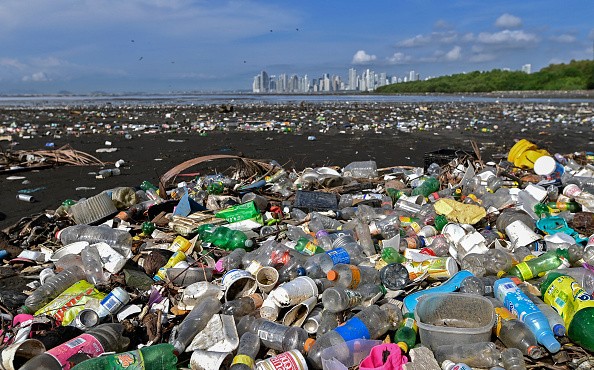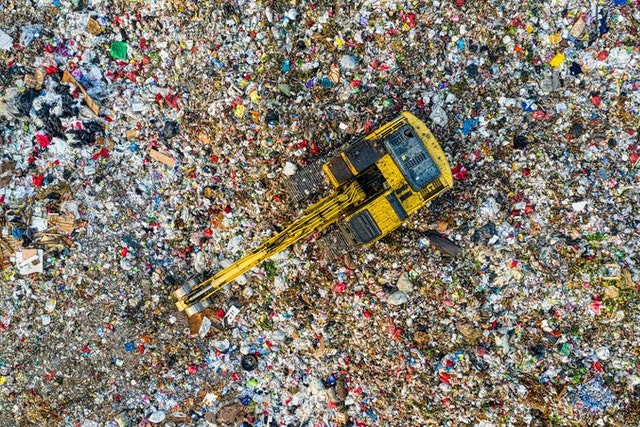Engineers and scientists at the University of Texas at Austin developed an enzyme variation that may break down environmentally harmful polymers in hours to days rather than decades.

This finding, published in Nature, might help tackle one of the world's most critical environmental issues: dealing with the billions of tons of plastic garbage stacking up in landfills and contaminating our natural lands and water.
The enzyme has the potential to dramatically increase recycling on a broad scale, allowing huge enterprises to lessen their environmental effect by recovering and reusing plastics at the molecular level.
Cutting Edge Recycling Technology
"The opportunities for leveraging this cutting-edge recycling technology are boundless across sectors," said Hal Alper, a McKetta Department of Chemical Engineering professor at UT Austin.
"We can begin to picture a genuine circular plastics economy through these more sustainable enzyme technologies, which allow firms from every sector the option to take the lead in recycling their goods, beyond the apparent waste management industry."
PET, a major polymer present in most consumer packaging, including cookie jars, soda bottles, fruit and salad packing, and some fibers and textiles, is the research subject.
It accounts for 12% of all worldwide garbage.
Also Read : Is Air Pollution Deadlier than Climate Change?
Breaking Down Plastics in No Time
The enzyme was able to complete a "circular process" that included breaking down the plastic into tiny pieces (depolymerization) and then chemically reassembling it (repolymerization).
These polymers can be completely broken down into monomers in as little as 24 hours in some situations.
Researchers at the Cockrell School of Engineering and College of Natural Sciences employed a machine learning model to develop unique mutations in PETase.
This natural enzyme allows bacteria to digest PET polymers.
The model predicts which enzyme mutations would achieve the objective of depolymerizing post-consumer waste plastic fast and at low temperatures.
The researchers verified the efficiency of the enzyme, which they are dubbing FAST-PETase, by testing 51 distinct post-consumer plastic containers, five different polyester fibers, textiles, and water bottles all produced from PET (functional, active, stable, and tolerant PETase).
"This study truly highlights the capability of bringing together multiple fields, from synthetic biology to chemical engineering to artificial intelligence," said Andrew Ellington, whose team developed the machine learning model.
Way Better than Traditional Methods

The most apparent strategy to reduce plastic waste is to recycle it. However, only around 10% of all plastic has been recycled globally.
Aside from dumping it in a landfill, the most popular way to dispose of plastic is to burn it, which is expensive, energy-intensive, and emits poisonous gas.
Other energy-intensive alternative industrial processes include glycolysis, pyrolysis, and/or methanolysis.
Biological solutions require far less energy.
Over the last 15 years, research on enzymes for plastic recycling has progressed. However, no one has been able to find out how to manufacture enzymes that could function well at low temperatures and be portable and economical on a vast industrial scale until now.
FAST-PETase can work at temperatures as low as 50 degrees Celsius.
The team's next goal is to scale up enzyme manufacturing to prepare for industrial and environmental applications.
The researchers have applied for a patent on the technique and are considering potential applications. The most evident are landfill cleanup and greening of high-waste-producing enterprises.
However, environmental cleanup is another important possible use. The team is considering many options for getting the enzymes into the field to clean up contaminated areas.
"When it comes to environmental cleaning applications, you need an enzyme that can act in the environment at room temperature," Alper explained. "This is where our technology has a significant advantage in the future."
Researchers
The study was headed by Alper, Ellington, Nathaniel Lynd, an associate professor of chemical engineering, and Hongyuan Lu, a postdoctoral researcher in Alper's group.
The machine learning model was constructed by Danny Diaz, a member of Ellington's team. Natalie Czarnecki, Congzhi Zhu, and Wantae Kim are chemical engineering team members, whereas Daniel Acosta, Brad Alexander, Yan Jessie Zhang, and Raghav Shroff are molecular biosciences team members.
ExxonMobil's research and engineering division supported the research as part of an ongoing research arrangement with UT Austin.
Related Article : For the First Time, Microplastics Contamination Has Been Detected Inside the Lungs
For more environmental news, don't forget to follow Nature World News!
© 2025 NatureWorldNews.com All rights reserved. Do not reproduce without permission.





